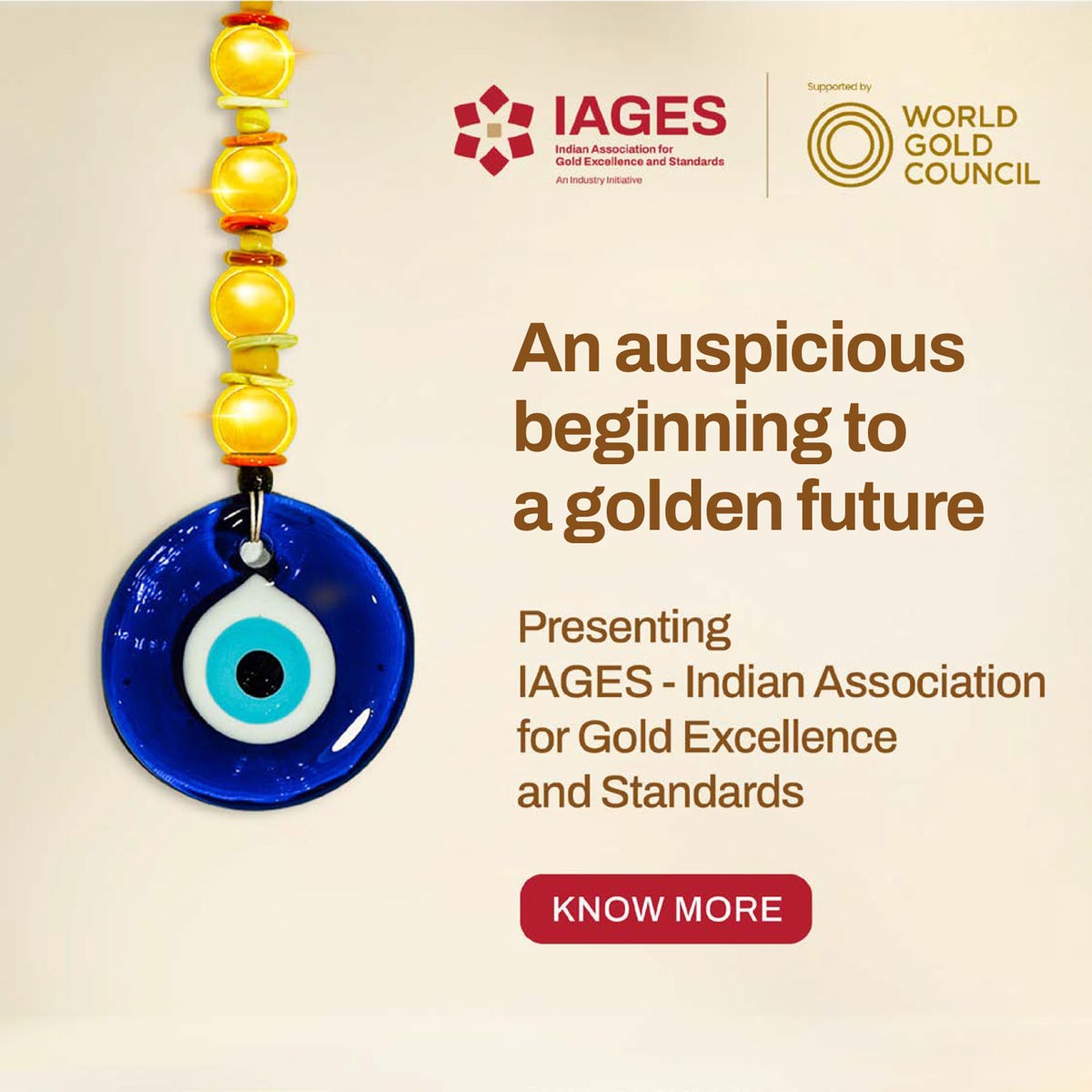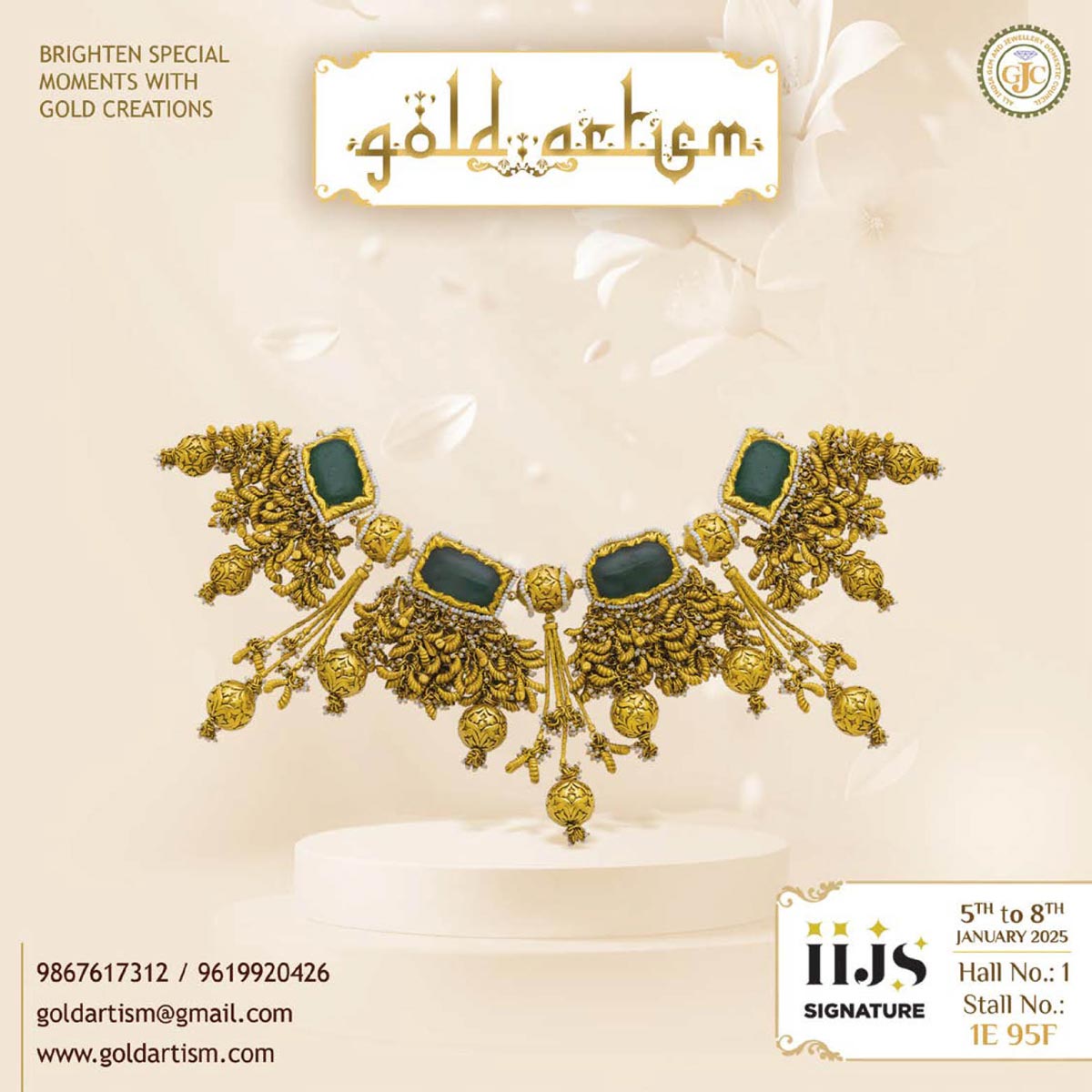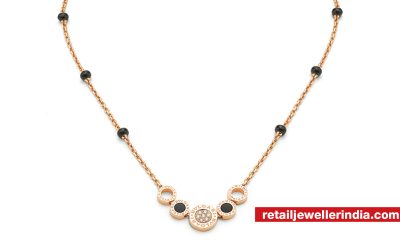Daily News
A Maze of Memoirs

[vc_row][vc_column][/vc_column][/vc_row][vc_row][vc_column width=”1/2″][vc_single_image image=”1873″ img_size=”full”][/vc_column][vc_column width=”1/2″][vc_column_text]
An extension of Saffronart’s Dialogues in Art series, the inaugural conference titled The Timeless Legacy of Indian Jewels, culminated with a display of 100 enchanting pieces. The Retail Jeweller traces the evolution of Saffronart and also give an account of its current event that brought to the table, an art form in a truly indulgent format.
[/vc_column_text][/vc_column][/vc_row][vc_row][vc_column width=”1/2″][vc_single_image image=”1875″ img_size=”full” style=”vc_box_rounded” css_animation=”fadeInDown”][vc_single_image image=”1876″ img_size=”full” style=”vc_box_rounded” css_animation=”fadeInDown”][/vc_column][vc_column width=”1/2″][vc_column_text]
The Timeless Legacy of Indian Jewels concluded in Mumbai on the 14th of October. This was a detour from a usual visit to a fusty old exhibition hall, and proved to be a delight for the discerning, and as well as for all and sundry. Over the years, the global company has not only lived up to its name but also diversified largely, particularly in the realm of auctions. And this time around, they decided to take their endeavours a rank higher, by organising an enthralling conference, culminated with an exposition of fine Jewels.
[/vc_column_text][/vc_column][/vc_row][vc_row][vc_column width=”1/2″][vc_column_text]
The atmosphere was rather breathable and not stuffy like regular art dos. All you needed was a passion for art and jewels, sans the arty jargons. This event was well conceived and had visitors return not just beguiled but also informed. The organisers added a stimulating twist by inviting speakers from across the globe. Clearly, apart from the jewels on display, it were the sessions that proved to be the biggest draw of the event. Tom Moses of the GIA, Francesca Cartier Brickell of the Cartier family, Maharani Radhikaraje Gaekwad from the Baroda Royal Family, François Arpels from Van Cleef & Arpels, and Susan Stronge of the V&A museum in London, were some of names that kept invitees hooked on.
[/vc_column_text][/vc_column][vc_column width=”1/2″][vc_single_image image=”1883″ img_size=”full” style=”vc_box_rounded” css_animation=”fadeInDown”][vc_single_image image=”1887″ img_size=”full” style=”vc_box_rounded” css_animation=”fadeInDown”][/vc_column][/vc_row][vc_row][vc_column width=”1/2″][vc_single_image image=”1885″ img_size=”full” style=”vc_box_rounded” css_animation=”fadeInDown”][vc_single_image image=”1884″ img_size=”full” style=”vc_box_rounded” css_animation=”fadeInDown”][/vc_column][vc_column width=”1/2″][vc_column_text]
One could see jewellers, connoisseurs and amateurs appreciate the whole experience with similar fervour. Discussions around art, aesthetics and jewellery design, tracing their roots to India’s 5,000-year-old heritage illuminated many souls. “The speakers invited shared their perspectives and elevated the conference to a forum that encouraged an exchange of ideas around India being the origin for important jewellery techniques. The conference introduced a new generation to India’s contribution to landmark jewellery techniques, ” described Minal Vazirani, Co-founder of Saffronart.
[/vc_column_text][/vc_column][/vc_row][vc_row][vc_column][vc_single_image image=”1881″ img_size=”full” style=”vc_box_border”][vc_column_text]
Day One opened at The Imperial Club. As a befitting tribute, it brought back the memories of the inimitable Jacob Diamond, the largest diamond in India’s crown. Conference curator, Usha Balakrishnan and John Zubrzycki gave their valuable insights. The story of a mysterious merchant, who sold the Diamond to the 6th Nizam of Hyderabad, was narrated like an intriguing story with anecdotes and imagery that made it more believable. Similarly, Francesca Cartier Brickell of the Cartier family rolled out some tantalising tales from the unpublished letters and diaries of her great-grandfather, Jacques Cartier. She elaborated on the solidarity between Cartier and Indian Royalty, including the reciprocal interest of the West in Indian designs, such as Cartier’s celebrated Tutti Frutti style. Explaining how INDIA INSPIRES CARTIER she said, back in 1911 when Jacques Cartier travelled north he wrote back home how every sight “Is a moment of contemplation”. In one such moment, it’s the hundreds of multi coloured turbans during a procession on the streets of old delhi inspired him to create the gloriously bright pieces of the iconic Tutti Fruitty collection that till date continue to add ‘wow’ factor to any fashion. Colors may today seem like a fashion norm but back then as Francesca Cartier Brickell says, “It was groundbreaking’
Spelling out the core value of Cartier’s Design ethics “Never copy ONLY create” she elucidated how since the early years Cartier has been collaborating with architects, interior designers and even lace makers to draw upon their design imagination.
Day Two too lived up to its expectations. “It’s a nanoscopic range of jewels from around the world that I’d like to have in my treasuries, chosen for taste, culture and artistic skill,” said Usha Balakrishnan, as she drew references to jewellery from history, mythology, literature and art. Another stalwart, Anjan Chakraverty brought the dying art of Benarasi enamelling to the forefront, emphasising on the significance of Benaras as a cauldron of inspiration for textiles and jewellery alike. For jewellery buffs and jewellers in particular, Derek Content stole the show, as he traced the history of uncut diamonds. The eminent British Jewellery Historian and Dealer from London, reminisced, ‘Today we argue that the beauty of a well cut diamond makes it desirable but it must not be forgotten that until the invention of diamond cutting in the end of the 15th century diamonds set in jewels were rough and not sparkling. ‘ He also mentioned the glorious history of diamonds from India. ‘Until the discovery of diamonds in 1728 in Brazil, virtually all of the world’s diamonds were believed to have come from India.’
Tom Moses of the GIA, and Pramod Kumar K G of Éka Archiving Services, steered the discussion towards the Golconda region, famed for its unrivalled diamonds. Senior Advisor to Christie’s Jewellery Department, Lisa Hubbard, initiated a thought-provoking conversation on what makes some jewellery more important than others citing examples of super duper auction sales like the Blue Moon of Josephine, that sold at a record $48 million in 2015.
Susan Stronge of the V&A Museum in London tapped into the museum’s own collection of Mughal miniature paintings and jewellery. Love for art and jewels reverberated the whole arena, as if for those two days, one was transported into a glittering world of dazzle that was beyond just wearable jewellery, as exampled by Salam Kaoukji, curator of the al-Sabah Collection in Kuwait. She reminisced the art of gem-setting in Indian weaponry and the splendour of Indian Jewel weapons under the patronage of Moghul Empire
Speaking about the uninterrupted Indian tradition of exceptional craftsmanship which manifested not only in jewels but more significantly in jewel weapons, she said, “Although these weapons were rarely rated as work of art, these were often indistinguishable from other works of art in style and technique. It showed decorative approach rarely expected in weapons.’
She emphasized how the design discretion of craftsmen gave shape to varied intricate structures and forms of these jewel weapons – Katars with narrow surfaces, bird head pommel, enamelled sword and scabbard ( reminiscent of classical architecture), emerald hour glass, floral dagger carved from Jade and more. More fascinatingly, in spite of the artistic freedom ‘the craftsmen never gave way into overdoing to enhance the design’ and ‘never misrepresented (not even leafs of the flowers)’.
She also inferred that thrones – the preeminent emblem of royalty – were made of gold. The material was intimately associated with kinship as it did not tarnish. Gold was the metaphor for incorruptibility mostly associated with rulers who were regarded as dispensers of justice. The foundation of these facts she said, have been recorded by Abu Fazal, the Grand vizier of Mughal emperor Akbar who wrote meticulously researched accounts of the empire.
In the concluding session, François Arpels explored India’s role as a source of creativity for long. Sharing images of the royal family of Baroda, some of which had never been seen before, Maharani Radhikaraje Gaekwad spoke of the unparalleled collections acquired by her ancestors. “We have both the privilege and responsibility of keeping the legacy of the Gaekwads alive,” she asserted with pride.
Names like Imperial Edge, the Gem Jewellery Export Promotion Council (GJEPC), IndusInd Bank, GIA India, Gyan Museum, Forevermark and The Retail Jeweller magazine collaborated on the event, evidently affirming Saffronart’s popularity. There were about 100 pieces that were on display at Saffronart Mumbai. Onlookers gazed at the spectacular pieces not just to admire, but also to realise such an assortment can only come from a country that was once titled the ‘Sone Ki Chidiya’ or The Golden Bird. Overall, the event proved to be a one-stop platform to meet like-minded people, to explore, to collaborate, to understand, to get updated, and above all witness the treasure trove first-hand in this time-crunched virtual world. “The conference revealed the many dimensions of jewellery in India from some of the most respected scholars and experts in the world. We heard about the cultural encounters between India and the iconic luxury houses Cartier and Van Cleef & Arpels from the very scions of the family,” concluded Usha Balakrishnan. Indeed, the event was a timeless testimony to India’s treasured jewellery heritage.
[/vc_column_text][/vc_column][/vc_row]



-

 Daily News2 months ago
Daily News2 months agoBvlgari adds designs to its pathbreaking mangalsutra collection ahead of wedding season
-

 Daily News2 months ago
Daily News2 months agoTrent, a TATA subsidiary, launches lab-grown diamond brand ‘Pome,’ shares surge 7.67%
-

 Daily News2 weeks ago
Daily News2 weeks agoMalabar Gold & Diamonds launches ‘Heritage Show’ in Mangalore, featuring jewellery inspired by Maharanis
-

 Daily News3 weeks ago
Daily News3 weeks agoSavji Dholakia’s visionary water conservation project ‘Bharatmata Sarovar’ reinforces commitment to sustainability









